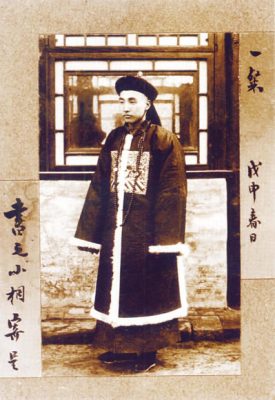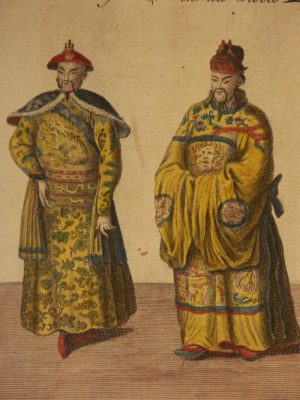The Qing Dynasty was ruled by the Manchus, an ethnic minority in China with Mongol roots. The country was previously primarily ruled by the Han Chinese. Thus, to appeal and assimilate to the majority, the Manchus adopted many aspects of the government they succeeded in, the Ming Dynasty. The Qing government utilized similar bureaucratic structures, but the government positions were distributed to Manchus, Chinese, and Mongol peoples. Additionally, the civil service examination was continuously used as the tool for entry into the government, as was the custom during the Ming reign; however, this was later abolished towards the end of the Qing rule.
Conversely, the changes benefited the common people with lowered taxes for most of the Qing dynasty, and official corvée duties were discontinued. The special artisan tax was eradicated and gave the members of the community to legally become artisans despite not inheriting the position through heredity. The Qing had come into power in 1636 but experienced a long transition period until 1681 allowed for the gradual shifting of these new policies.
The Qing dynasty especially flourished during the beginning of each of the following emperor’s reigns: Kangxi, Yongzheng, and Qianlong. Their autocratic governance and stronghold on the bureaucratic system brought stability to China, resulting in economic abundance and a rapid increase in China’s population. This provided the country with resources to continue expansion in the west, north, and east.
Hierarchy
The emperor was at the top of the hierarchy in the government, possessing the titles of patron of Tibetan Buddhism, Mongol khan, and protector of Muslims. As the absolute ruler, he had the authority to create any law he aimed to and commission the projects he desired.
He presided over six Boards or Ministries that also had two presidents and four vice presidents each. These officials, alongside the emperor, served as the formal administrative group that made decisions about policies in the country. They were known as the Grand Council. The structures retained from the Ming dynasty were considered the Qing “Outer Court,” tasked with dealing with mundane matters in the country.
Upon entry into the government through the civil service examination, the Qing dynasty had positions separated into two: civil roles and military roles. Each had nine ranks and was divided further into two categories: a and b. Examples of civil positions were that of the Grand Secretary of the palace or a tax collector assigned to a specific prefecture. On the other hand, military positions consisted of jobs in the imperial army such as sergeant or second class private.
Six Boards or Ministries
Board of Finance
This board was tasked to collect revenue for the imperial treasury and effectively manage the allocation of the funds. The system that financed imperial endeavors was the “household” through taxation on people who owned land. This was only complemented by the government’s control over the necessities of the members of society, such as crops or salt.
Board of Civil Appointments
The body that was in charge of recruiting and monitoring civil officials was the Board of Civil Appointments. They decided how to evaluate, promote, and terminate workers in civil service.
Board of War
The emperor dominated with his authority over the military, the Banner armies, and the high-ranking soldiers of the Chinese army. This was in contrast to the Ming dynasty, which left the Board of War to control this area. Thus, the Board of War was left with the Green Standard armies during the Qing dynasty, with their role purely being an administrative one. The emperor observed all other military matters. He did this through the Manchu ruling council, which was eventually changed to the General Command Center.
Board of Punishment
The Board of Punishment was involved with overseeing legal issues. They were in charge of the courts and jails. Both legislative and executive branches of the government engaged in court matters which created a gray area in legal proceedings. The emperor was the absolute ruler and had the power to veto any outcome he was against. This took place even in lower courts. A strict penal code was enforced, much like during preceding dynasties.
Board of Rites
Decisions regarding the procedures at court were discussed by the Board of Rites. They instructed the court regarding worshiping gods and ancestors. Other than that, the Board of Rites also assisted the Board of Civil Appointments with civil service examination.
Board of Works (Gongbu) – The Board of Works handled all governmental building projects, including palaces, temples, and the repairs of waterways and flood canals. It was also in charge of minting coinage.
Feudatory Affairs Office
Aside from the Six Boards, the Qing dynasty established the Feudatory Affairs Office, which took charge of the minority ethnic groups in China, including their tribute nations such as Russia.

